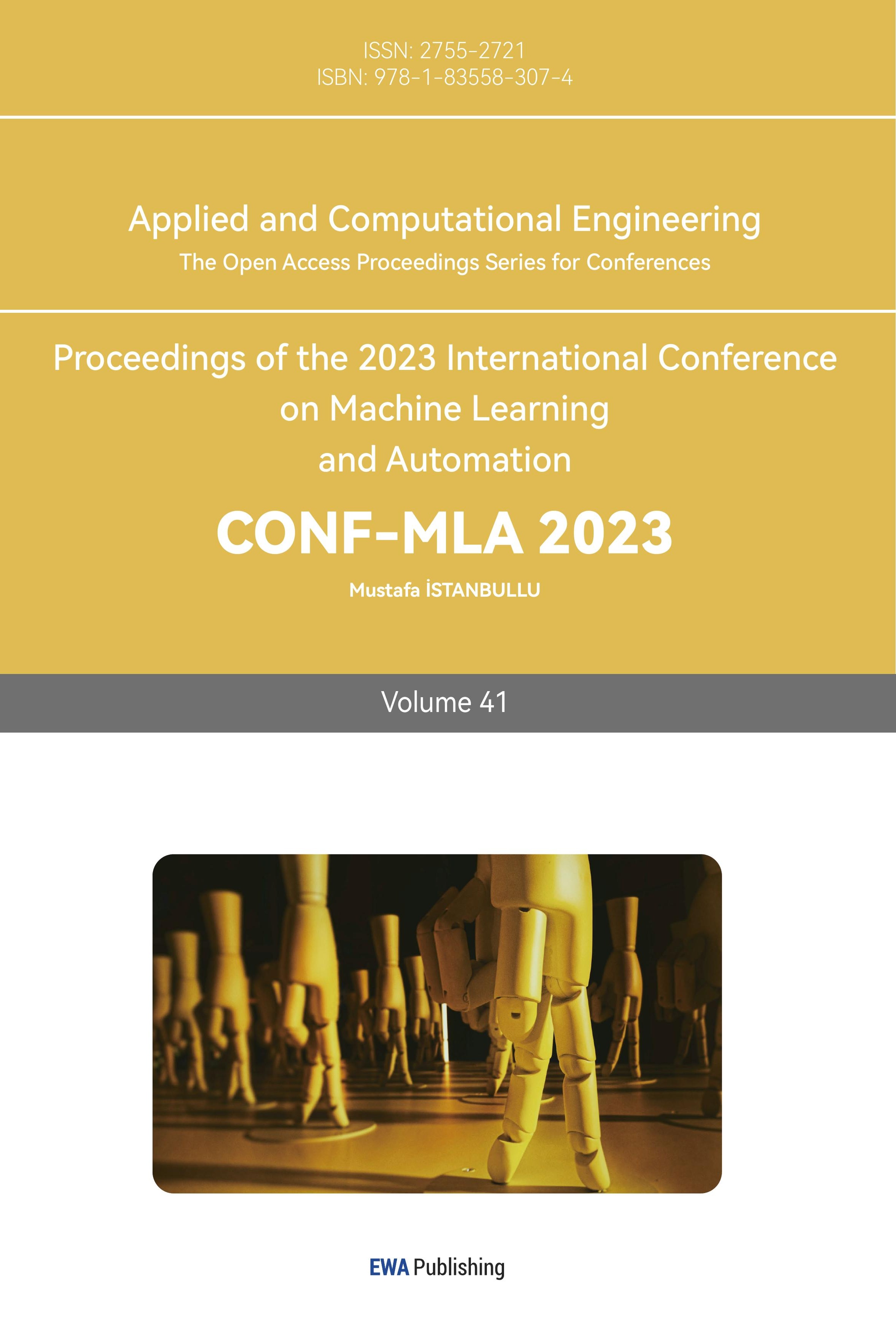References
[1]. World Health Organization 2020 Cardiovascular diseases (CVDs) WHO https://www.who.int/news-room/fact-sheets/detail/cardiovascular-diseases-%28cvds%29
[2]. Shah D Patel S and Bharti S K 2020 Heart Disease Prediction using Machine Learning Techniques. SN COMPUT SCI 1: p 345
[3]. Alty S R Millasseau S C Chowienczyc P J and Jakobsson A 2003 Cardiovascular disease prediction using support vector machines 46th Midwest Symposium on Circuits and Systems 1: pp 376-379
[4]. Jones R 2021 Neural Networks in Cardiac Predictions Cardiology Today https://www.frontiersin.org/articles/10.3389/fphys.2021.734178/full
[5]. Doki S Devella S Tallam Reddy Gangannagari S S Sampathkrishna Reddy P and Reddy G P 2022 Heart Disease Prediction Using XGBoost Third International Conference on Intelligent Computing Instrumentation and Control Technologies (ICICICT) : pp 1317-1320
[6]. Karadeniz T Tokdemir G and Maraş H H 2021 Ensemble Methods for Heart Disease Prediction New Gener Comput 39: pp 569–581
[7]. Chawla S Bowyer K Hall L O and Kegelmeyer W P 2002 SMOTE: Synthetic Minority Over-sampling Technique Journal of Artificial Intelligence Research 16: pp 321-357
[8]. Chen T and Guestrin C 2016 XGBoost: A Scalable Tree Boosting System Proceedings of the 22nd ACM SIGKDD International Conference on Knowledge Discovery and Data Mining: pp 785-794
[9]. Bergstra J and Bengio Y 2012 Random Search for Hyper-Parameter Optimization Journal of Machine Learning Research 13: pp 281-305
[10]. Géron A 2020 Hands-On Machine Learning with Scikit-Learn and TensorFlow Concepts, Tools, and Techniques to Build Intelligent Systems 43: pp 11353-1136
[11]. Dataset https://www.kaggle.com/datasets/johnsmith88/heart-disease-dataset
Cite this article
Yang,J.C. (2024). The prediction and analysis of heart disease using XGBoost algorithm . Applied and Computational Engineering,41,61-68.
Data availability
The datasets used and/or analyzed during the current study will be available from the authors upon reasonable request.
Disclaimer/Publisher's Note
The statements, opinions and data contained in all publications are solely those of the individual author(s) and contributor(s) and not of EWA Publishing and/or the editor(s). EWA Publishing and/or the editor(s) disclaim responsibility for any injury to people or property resulting from any ideas, methods, instructions or products referred to in the content.
About volume
Volume title: Proceedings of the 2023 International Conference on Machine Learning and Automation
© 2024 by the author(s). Licensee EWA Publishing, Oxford, UK. This article is an open access article distributed under the terms and
conditions of the Creative Commons Attribution (CC BY) license. Authors who
publish this series agree to the following terms:
1. Authors retain copyright and grant the series right of first publication with the work simultaneously licensed under a Creative Commons
Attribution License that allows others to share the work with an acknowledgment of the work's authorship and initial publication in this
series.
2. Authors are able to enter into separate, additional contractual arrangements for the non-exclusive distribution of the series's published
version of the work (e.g., post it to an institutional repository or publish it in a book), with an acknowledgment of its initial
publication in this series.
3. Authors are permitted and encouraged to post their work online (e.g., in institutional repositories or on their website) prior to and
during the submission process, as it can lead to productive exchanges, as well as earlier and greater citation of published work (See
Open access policy for details).
References
[1]. World Health Organization 2020 Cardiovascular diseases (CVDs) WHO https://www.who.int/news-room/fact-sheets/detail/cardiovascular-diseases-%28cvds%29
[2]. Shah D Patel S and Bharti S K 2020 Heart Disease Prediction using Machine Learning Techniques. SN COMPUT SCI 1: p 345
[3]. Alty S R Millasseau S C Chowienczyc P J and Jakobsson A 2003 Cardiovascular disease prediction using support vector machines 46th Midwest Symposium on Circuits and Systems 1: pp 376-379
[4]. Jones R 2021 Neural Networks in Cardiac Predictions Cardiology Today https://www.frontiersin.org/articles/10.3389/fphys.2021.734178/full
[5]. Doki S Devella S Tallam Reddy Gangannagari S S Sampathkrishna Reddy P and Reddy G P 2022 Heart Disease Prediction Using XGBoost Third International Conference on Intelligent Computing Instrumentation and Control Technologies (ICICICT) : pp 1317-1320
[6]. Karadeniz T Tokdemir G and Maraş H H 2021 Ensemble Methods for Heart Disease Prediction New Gener Comput 39: pp 569–581
[7]. Chawla S Bowyer K Hall L O and Kegelmeyer W P 2002 SMOTE: Synthetic Minority Over-sampling Technique Journal of Artificial Intelligence Research 16: pp 321-357
[8]. Chen T and Guestrin C 2016 XGBoost: A Scalable Tree Boosting System Proceedings of the 22nd ACM SIGKDD International Conference on Knowledge Discovery and Data Mining: pp 785-794
[9]. Bergstra J and Bengio Y 2012 Random Search for Hyper-Parameter Optimization Journal of Machine Learning Research 13: pp 281-305
[10]. Géron A 2020 Hands-On Machine Learning with Scikit-Learn and TensorFlow Concepts, Tools, and Techniques to Build Intelligent Systems 43: pp 11353-1136
[11]. Dataset https://www.kaggle.com/datasets/johnsmith88/heart-disease-dataset









